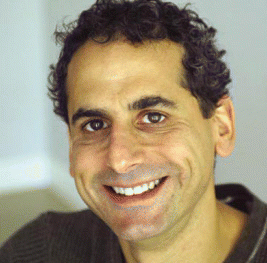We have a team with anesthesia, pediatric surgery, and otolaryngology-one of the things I’d say is that close collaboration and respect is essential, said Dr. Haddad. It’s important to not let egos get in the way of good patient care.
Explore This Issue
June 2006Teamwork is even more critical when it comes to managing something such as CHAOS (congenital high airway obstructive syndrome) when treatment has to begin right in the delivery room.
Twenty years ago, pediatric otolaryngologists were members of the senior society. It became a subspecialty, truly, and we went out and developed our own society. – Blake Papsin, MD
They’re not easy cases to do. It’s not the place for a resident or fellow to take a lead role. What’s difficult is when the child’s head and neck is delivered, but it’s not continuously breathing. You’re dealing with distorted anatomy, but you’re also not dealing with a dynamic airway, said Dr. Haddad. The trachea is small and hard to find.
Dr. Papsin added that at his center, the babies are delivered through planned Caesarian section with two teams of medical personnel present-one for each the mother and the baby.
Using Technology
Imaging is key to knowing how to manage these cases, said Dr. Haddad. We’ve had good success on at least three cases under CT guidance-in the really challenging cases where it doesn’t look easily resectable, if you have the availability of interventional radiology, that’s the way to go, he said.
Putting the newborn on ECMO (extracorporeal membrane oxygenation) is useful in cases where there is trouble establishing the airway, said Dr. Kenna. She has seen a couple of babies placed on ECMO in the delivery room which allowed time for airway assessment and resection of the mass.
Having a CHAOS cart with all the needed equipment constantly at the ready is a big help too, said Dr. Haddad.
Still, there is the question of whether these procedures even provide much help to these patients. Research should be done to look at this prospectively and decide whether there is actually an improvement in the length of life and the quality of life… In my short experience, that has not been the case. We have not caused a significant improvement in quality in the life. It’s usually aggressive tumors, said Dr. Papsin.
The fact that many of these babies don’t survive is an important aspect to discuss with parents before the baby is born.
Treating Macrocystic Lesions
Dr. Kenna reported she had some experience using the sclerosing agent OK-432 for macrocystic lesions, but said it’s important to pick the right lesion and the right patient. It’s not the benign thing some of the literature suggests. There’s a big inflammatory component that has quite a bit of discomfort, she said. Also, there is little experience in pediatric otolaryngology with the use of the compound, and it is not widely available.

Leave a Reply